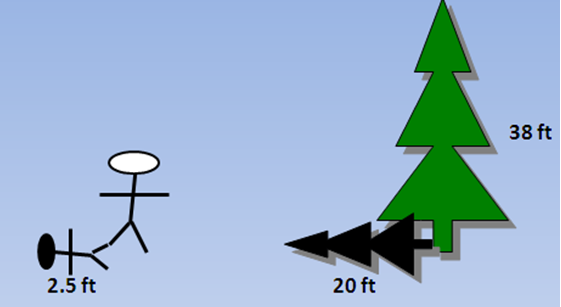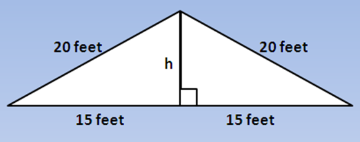FREE ISAT Quantitative Reasoning Questions and Answers
When I buy my favorite brand of coffee from the supermarket I normally have a choice of three jar sizes, small - 100 g; medium - 200 g; large - 400 g.
At present, all three jars contain 25% extra for the normal price and, in addition, customers who buy a large jar get a small jar free. For customers who buy a large jar of coffee, what is the total extra percentage of coffee for the normal price of the large jar?
Explanation:
This question requires the calculations to be made in the appropriate order.
Start with calculating the amount in each jar.
The 25% extra means that the large jar will contain 400 g x 1.25 = 500 g of coffee.
Similarly, the small jar will contain 100 g x 1.25 = 125 g of coffee.
Buying a large jar of coffee (500 g) also gets a small jar for free (125 g).
So, in total the customer will get 625 g.
If the special offers had not been in place, purchasing a large jar of coffee would get a customer 400 g.
Thus, customers obtain an additional 500 g + 125 g - 400 g = 225 g of coffee.
A customer will therefore get (225 / 400) × 100% = 56 1/4% more coffee.
The English unit of volume closest in size to a liter is _______.
Explanation:
A quart is the English unit of volume closest in size to a liter. While both liter and quart are units of volume, they are not the same, but a quart is the closest in size to a liter among the options provided.
A computer chip was weighed and found to have a mass of 23.3040 g. How many significant figures does this number have?
Explanation:
The number 23.3040 g has six significant figures because all non-zero digits and the zeros between them are significant. Zeros at the end of a number after a decimal point are also significant.
Which of the following sequences do not adhere to the same underlying mathematics?
Explanation:
Do they all progress in 12's? No. The numbers are all primes which are the sums of two squares.
Primes: 2,3,5,7,11,13,17,19,23, 29,31,37,41,43,47,53,59,61, 67,71,73,79,83,89,97,101,103, 107,109,I
3Squares: 1,4,9,16,25,36,49,64,81,100,121,144,169,196,225,256
A 38-foot tree casts a 20-foot shadow. A boy standing nearby casts a shadow that is 2.5 ft long. How tall is the boy?

Explanation:
The boy is 4.75 ft.
A particular sample of air is 2.5% water vapor. Express the concentration of water vapor in parts per million (ppm):
Explanation:
To convert from a percentage to parts per million (ppm), you multiply by 10,000. Therefore, 2.5% water vapor is equivalent to 2.5 x 10,000 = 25,000 ppm.
The picture shows the dimensions of the roof of a house. What is the height, h, to the nearest tenth of a foot?

Explanation:
The height is 13.2 ft
Which of the following is not an SI unit of the property it measures?
Explanation:
While length (meter), mass (kilogram), and time (second) are all SI (International System of Units) units of the properties they measure, volume is not an SI unit. The SI unit for volume is cubic meters (m^3), while the liter is a non-SI unit often used for convenience in everyday measurements.
How many centimeters are in 0.129 m?
Explanation:
To convert meters to centimeters, you multiply by 100. So, 0.129 meters equals 12.9 centimeters.
Classify the given triangle by angles and sides.

Explanation:
"Obtuse" refers to an angle in geometry that measures more than 90 degrees but less than 180 degrees.
"Scalene" refers to a type of triangle in geometry where all three sides have different lengths, and consequently, all three angles have different measures.
The quantity 8.7 × 105 g is expressed in standard decimal notation:
Explanation:
To express 8.7 × 10^5 g in standard decimal notation, you move the decimal point five places to the right, resulting in 870,000 g.